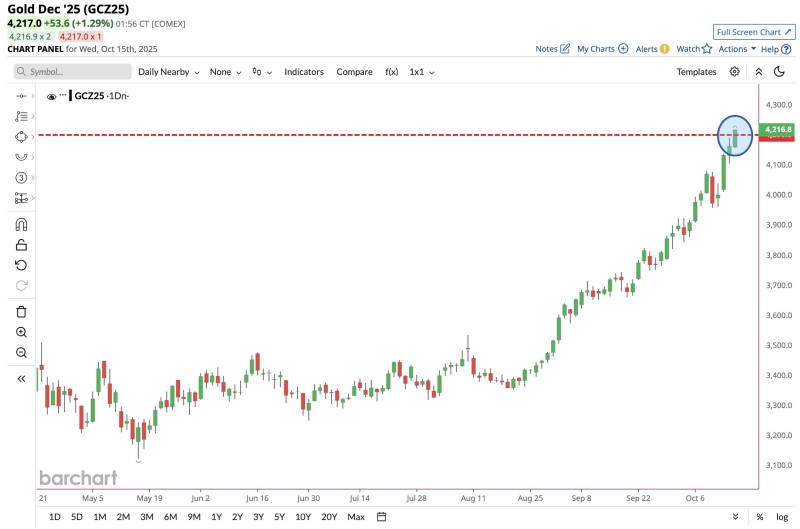Gold has just made history. For the first time ever, the precious metal climbed above $4,200 per ounce, confirming what many investors have been anticipating for months. This isn't just another price target—it's a watershed moment that reflects deep shifts in global markets, from geopolitical tensions to monetary policy uncertainty. The question now isn't whether gold can hold these gains, but how much higher it might go.
A Historic Breakout
According to Barchart, December 2025 gold futures reached $4,217 per ounce, smashing through the closely-watched $4,200 resistance that traders had been eyeing for weeks. The chart tells a compelling story: since early September, when gold was hovering around $3,400, the metal has climbed in what looks like an almost uninterrupted uptrend. That's roughly a 24% gain in just over a month—a staggering move for an asset typically known for stability rather than explosive rallies.

Technical Picture
The $4,200 level has now flipped from resistance to potential support, which is exactly what bulls want to see. If buyers can defend this zone, there's room for gold to push even higher. The steep, near-vertical rise shows that buyers are firmly in control, though it also means we could see some sharp pullbacks as traders lock in profits. The breakout itself came after a brief consolidation just below $4,200, which adds legitimacy to the move rather than making it look like a fluke.
Gold doesn't just wake up one day and decide to rally 24%. Several forces are converging: geopolitical stress is pushing investors toward safety, central banks around the world are hoarding gold at record levels, and a softer U.S. dollar is amplifying gains for international buyers. Meanwhile, uncertainty around interest rates is keeping real yields low, which removes one of gold's biggest headwinds. When bonds don't offer much real return, gold starts looking a lot more attractive.
 Peter Smith
Peter Smith

 Peter Smith
Peter Smith


